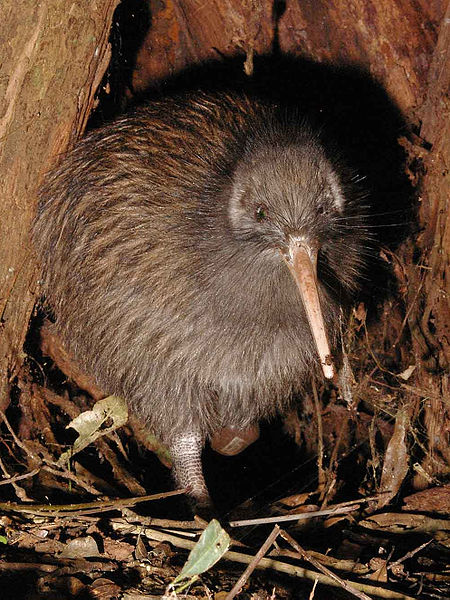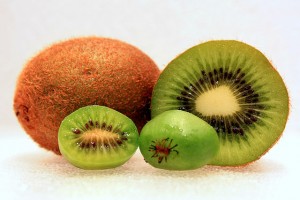Agus Muid sna Fritíortha (While We’re in the Antipodes) Posted by róislín on May 31, 2014 in Irish Language
(le Róislín)
Cíobhaí (an t-éan) (nasc ag bun an leathanaigh)
While we’re on an antipodal tear (naisc thíos), we might as well look at An Nua-Shéalainn also. As with An Astráil, first the place name itself, then a few ki-words (úúps – deacair sin a sheachaint!).
So, first, the country name. Before we look at the actual Irish for “New Zealand,” let’s acknowledge the indigenous name, Aotearoa, sa teanga Maoraise. There are several translations of the Maori name, such as “the land of the long white cloud” and ‘long bright world’ (referring to the hours of daylight). These could give us some food for Irish vocabulary thought, such as “scamall” for cloud or “geal” for bright, but I don’t want to belabor translating Maori into Irish when we already have our hands full. But I might be tempted, in a future blog, to make this a “dúshlán” for readers.
Meanwhile, let’s look at “An Nua-Shéalainn.” Like “An Astráil,” and many other place names in Irish, “An Nua-Shéalainn” includes the word “the.”
An Nua-Shéalainn [un NOO-uh HAY-lin, note that the “s” is silent], New Zealand
na Nua-Shéalainne, of New Zealand
muintir na Nua-Shéalainne
fásra agus ainmhithe na Nua-Shéalainne
A person from New Zealand is a “Nua-Shéalannach,” as in “Is Nua-Shéalannach mé.”
And in some prepositional phrases:
go dtí an Nua-Shéalainn, to New Zealand
chun na Nua-Shéalainne, to New Zealand, using the genitive case construction after “chun”
sa Nua-Shéalainn, in New Zealand
While we’re at it, we could take a brief look at “Zeeland” itself, for which New Zealand is named.
An tSéalainn, Zeeland
Here, the underlying word is “Séalainn,” with the “s” pronounced [SHAY-lin], but when we refer to the actual province of the Netherlands, the phrase becomes “An tSéalainn.” The initial slender “ts” sound is your basic Irish slender “t” as in “teach” or “tí.” In other words, this “ts-” is not like “tsunami,” “tsar (tzar),” or “tzatziki.” In Irish, the “s” sound of “ts” is completely covered up by the “t.” If the first vowel were a, o, or u, the pronunciation of the “t” would be different (broad) but the same principle would apply (an tsúil, [un too-il], for “the eye,” for example).
And now, let’s look at some iconic New Zealand vocabulary
kiwi (the bird): cíobhaí, although the spelling “cíbhi” has also been used. Remember, no “k” and no “w” in most Irish words.
kiwi (the fruit): also “cíobhaí,” since we don’t seem to hear the original name, Chinese gooseberry, much anymore.
If you’re really curious about “gooseberry” in Irish, it’s “spíonán,” which is understood as the “European gooseberry.” The adjective for “Chinese” is “Síneach,” but I’ve only seen the combination “Chinese gooseberry” a handful of times in Irish, and even there, it’s given with quotation marks, probably indicating that the writer doesn’t consider it a typical term. So I’ll go with the flow and stick to “cíobhaí.”
And few more words and phrases I’ve picked out from online glossaries. I don’t have a lot of personal experience using these, so welcome any feedback from “lucht labhartha na Gaeilge sa Nua-Shéalainn.” The Maori is listed first here, in case there’s any doubt, ; )
aroha: grá
kai: bia
kia kaha: bí láidir
Kia ora: Haló / Fáilte / Go raibh maith agat [go liteartha, ciallaíonn sé: Bí sláintiúil NÓ Bíodh do shláinte agat]
Meri Kirihimete: Nollaig Shona
tapu (gaolmhar le “tabu” sa teanga “Tongan”): tabú (tagann an focal Béarla “taboo” ón bhfocal “tabu“)
wahine, bean (as “woman” or “wife”)
whanga: cuan, bá
Like Australia, New Zealand has some unique flora and fauna (fásra agus ainmhithe), including:
oisre leathan Nua-Shéalannach, New Zealand dredge oyster
geiceo crainn Nua-Shéalannach, New Zealand tree gecko, whose plural has become one of my favorite new words: geiceonna crainn Nua-Shéalannacha
líon na Nua-Shéalainne, New Zealand flax
niamhscoth dhearg, New Zealand hebe (tagairt ar bith do Nua-Shéalainn í féin)
nóinín Nua-Shéalannach, arorangi or New Zealand holly (note the Irish is literally “New Zealand Daisy,” not “New Zealand holly”)
Bhuel, taking céimeanna babaí sa Maorais: ka kita ano (Feicfidh mé arís thú) – Róislín
Naisc:
In áit eile sna fritíortha:
https://blogs.transparent.com/irish/cuir-gaeilge-ar-fhocail-strine-focail-astralacha-mar-brumby-srl/ (25 Bealtaine 2014)
https://blogs.transparent.com/irish/beagan-eile-de-bhearla-na-hastraile-a-little-more-aussie-english-translated-into-irish/ (28 Bealtaine 2014)
cíobhaíonna:
http://commons.wikimedia.org/wiki/File:TeTuatahianui.jpg (le Maungatautari Ecological Island Trust, fearann poiblí)
http://commons.wikimedia.org/wiki/File:Hardy-Kiwi-Comparison-3.jpg, (le hiperpinguino)

Build vocabulary, practice pronunciation, and more with Transparent Language Online. Available anytime, anywhere, on any device.






Comments:
Brian:
An deas! I mo chónaí sa Nua-Shéalainn le cúpla mí anois agus is deas a bheith ag léamh fúithi i gcomhthéacs Gaelach!
róislín:
@Brian A Bhriain, a chara, Tá áthas orm gur bhain tú sult as an mblag!